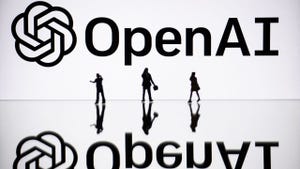TechTarget and Informa Tech’s Digital Business Combine: A Deep Dive into a Global Tech Knowledge Network and AI-Driven Content Ecosystem
The technology media landscape is undergoing a substantial transformation as TechTarget and Informa Tech announce a consolidation of their Digital Business operations. This strategic alliance unites two powerhouse brands under a singular, expansive knowledge network designed to serve technology buyers and sellers with objective, original insights. Drawing from a vast portfolio of online properties and a focus on trusted expertise, the combined entity aims to empower professionals and organizations to navigate complex technology decisions with confidence. The collaboration signals a shift toward a more integrated, data-informed approach to B2B technology journalism, content licensing, events, and analyst-driven guidance, all anchored by a shared commitment to accuracy, transparency, and practical impact for business priorities.
In this feature, we unpack the implications of the TechTarget–Informa Tech Digital Business integration, explore the breadth and depth of the combined network, and examine how the editorial, product, and data strategies converge to deliver value to an audience of millions of technology practitioners, executives, and decision-makers. We also look at the broader AI and data-centric topics that sit at the core of the merged organization’s editorial universe, from machine learning and artificial intelligence to data management, cloud computing, cybersecurity, and IoT. Finally, we consider the evolving role of content provenance technologies, AI-enabled tools, and trust mechanisms that shape the way professionals evaluate, validate, and adopt emerging technologies in a rapidly changing market.
The Consolidation: What the merger means for the Digital Business footprint
The union of TechTarget and Informa Tech’s Digital Business activities represents more than a branding alignment. It is the creation of an integrated ecosystem that consolidates editorial assets, events, and analyst relationships into a single, scalable platform. The core objective of this consolidation is to deliver deeper value to technology buyers and sellers by providing:
- A unified pipeline of original, objective content across a broad spectrum of technology topics, authored by trusted sources with editorial independence.
- A consolidated network of online properties that collectively reach a wide audience of technology professionals, driving informed decision-making across business priorities.
- Enhanced opportunities for partners, sponsors, and developers to engage with a highly qualified audience through a cohesive portfolio of content formats, from articles and white papers to webinars, podcasts, and events.
- A data-rich environment that supports insights, benchmarking, and trend analysis, enabling more precise targeting and more meaningful content personalization without compromising editorial integrity.
The strategic alignment brings together the strengths of two organizations that have long been recognized for systematic coverage of enterprise technology, rigorous editorial standards, and a robust footprint in both editorial and analyst spheres. By blending resources, data assets, and distribution channels, the merged Digital Business entity aspires to sustain accountability and usefulness for technology professionals who rely on independent, practical reporting to prioritize initiatives, optimize investments, and de-risk technology choices.
The practical upshot is a more extensive catalog of authoritative content, a broader menu of formats and delivery channels, and a deeper emphasis on cross-topic coverage that aligns with real-world business priorities. Professionals can expect to encounter content that not only explains new technologies but also contextualizes them within operational realities, governance frameworks, and long-term IT roadmaps. This is not mere consolidation for its own sake; it is a deliberate strategy to amplify reach, improve relevance, and accelerate the pace at which decision-makers access trustworthy knowledge in a crowded information landscape.
Network reach, content strategy, and audience engagement
The combined Digital Business entity emphasizes a networked approach to technology journalism and knowledge dissemination. With a portfolio that spans hundreds of online properties and thousands of granular topics, the organization seeks to ensure coverage that is both comprehensive and actionable. Key dimensions of the strategy include:
- Scale and depth: The network claims exposure across 220+ online properties and coverage of more than 10,000 granular topics. This breadth supports both broad enterprise technology trends and niche, domain-specific inquiries, enabling practitioners at different levels to locate relevant guidance quickly.
- Audience reach: The editorial program targets a professional audience exceeding 50 million individuals, reflecting a broad, globally distributed base of technology buyers, influencers, and practitioners. The scale supports robust signal-to-noise ratios for advertisers and partners seeking qualified engagement.
- Originality and objectivity: The content framework emphasizes original reporting, independent analysis, and objective perspectives drawn from trusted sources. This editorial backbone is designed to offer decision-ready insights that complement vendor materials and marketing messages.
- Priority-driven coverage: The content strategy aligns with business priorities across IT, cloud, data management, cybersecurity, AI/ML, IoT, and related vertical and industrial sectors. The aim is to help readers discern which technologies, architectures, and practices will deliver the most value in specific contexts.
- Cross-media formats: The network supports a diversified content mix—articles, white papers, case studies, podcasts, webinars, videos, and events—providing multiple entry points for readers and partners to engage with information in the way that suits their workflow.
The audience engagement approach is designed to maximize usefulness without compromising credibility. Editorial teams are structured to ensure timely coverage of breaking developments while maintaining long-form, deep-dive analyses that help readers build durable knowledge. The network’s relationship with enterprise buyers is reinforced by data-driven storytelling: content is designed to illuminate business impact, quantify risk, and outline practical steps for implementation. This approach is intended to translate complex technical topics into decision-ready narratives that acknowledge real-world constraints such as budgets, timelines, regulatory considerations, and organizational change management.
To sustain this level of engagement, the Digital Business ensemble emphasizes consistency, editorial discipline, and continuous improvement through feedback loops. Readers’ questions, industry feedback, and market signals are used to refine content topics, update evergreen resources, and calibrate the balance between evergreen tutorials and timely news coverage. By doing so, the network aspires to remain a trusted, go-to resource for professionals who must balance speed with accuracy when evaluating new technologies.
Key properties, platforms, and editorial offerings in the merged ecosystem
A hallmark of the Digital Business consolidation is the breadth of properties, platforms, and offerings accessible to readers, partners, and contributors. The ecosystem is designed to support a comprehensive content experience that covers not only news and analysis but also practical guidance, events, and research collaborations. Notable components include:
- Topic-driven portals and hubs: A large portfolio of topic-focused destinations that aggregate editorial coverage across AI, ML, data analytics, cybersecurity, cloud, IoT, robotics, and more. These hubs help readers quickly surface the most relevant content for their interests and responsibilities.
- Events and partnerships: A robust events program that connects readers with industry experts, analysts, and practitioners through conferences, summits, and virtual gatherings. These events are designed to facilitate knowledge transfer, product discovery, and professional networking, complementing the editorial content with experiential learning.
- Analyst-led research and insights: Access to analyst perspectives and research across technology domains, enabling readers to compare vendor offerings, understand market dynamics, and forecast technology trajectories. The analyst dimension enhances the depth of content and provides a counterpoint to journalistic reporting.
- Data-informed guidance: The ecosystem emphasizes data-driven storytelling through metrics, benchmarks, and case-based evidence. Readers can anchor decisions in measurable outcomes, which is particularly valuable in areas such as AI adoption, data governance, and digital transformation initiatives.
- Editorial integrity and trust: A continued emphasis on objective, evidence-based reporting, complemented by transparent methodologies and disclosure practices. This commitment underpins the credibility of the network as a trusted source for enterprise technology decision-makers.
Editorial sections and topic clusters span:
- Deep learning, neural networks, and predictive analytics
- Natural language processing (NLP) and related topics such as language models, speech recognition, and chatbots
- Data science, data analytics, and data management
- Synthetic data generation and its implications for testing and training AI systems
- AI policy, governance, and ethics
- AI applications in enterprise settings, including applied AI case studies and industry-specific deployments
- Automation, robotic process automation, and intelligent automation
- Edge computing, cloud computing, cybersecurity, and IT infrastructure
- Metaverse and immersive technologies, as they intersect with enterprise digital strategies
This structured editorial framework enables consistent topic coverage while allowing for deep-dive coverage of emerging technologies and their business implications. It also supports SEO objectives by ensuring keyword-rich, semantically related content across the network while maintaining a natural reading experience for professionals.
Editorial focus: ML, NLP, data, and responsible AI
In the combined Digital Business ecosystem, machine learning (ML), natural language processing (NLP), data analytics, and responsible AI form the core intellectual spine. The editorial stance emphasizes practical applications, empirical results, and governance considerations. The following subsections summarize how these topics are approached within the network:
- Deep learning and neural networks: Coverage includes model architectures, training methodologies, deployment patterns, and performance benchmarks across industries. Readers gain insights into use cases such as predictive maintenance, demand forecasting, fraud detection, and optimization of operational processes. The reporting emphasizes real-world outcomes, scalability considerations, and risk management associated with deploying large-scale ML systems.
- Predictive analytics: Articles and case studies explain how organizations translate historical data into forward-looking insights. Topics include feature engineering, model selection, validation techniques, and integration with existing business intelligence stacks. Emphasis is placed on actionable recommendations, ROI implications, and governance of predictive models within business processes.
- NLP, language models, and chatbots: The coverage explores advances in language models, the practical deployment of NLP systems, voice interfaces, and intent-driven chat experiences. Readers encounter guidance on model selection, data quality, bias mitigation, and conversational design that aligns with enterprise goals, including customer support automation and internal knowledge management.
- Data science, data analytics, and data management: The content delves into the lifecycle of data—from collection and governance to storage architectures, analytics platforms, and data quality. Readers learn about data pipelines, metadata management, data lineage, and the importance of secure, compliant data practices in regulated industries.
- Synthetic data and data generation: The network highlights synthetic data as a tool for training AI while addressing privacy and compliance considerations. Discussions cover techniques, evaluation strategies, and the scenarios where synthetic data augments real-world datasets without compromising data integrity or regulatory requirements.
- Responsible AI, AI policy, and ethics: The editorial line emphasizes the social and organizational implications of AI technology. Topics include accountability frameworks, bias detection and mitigation, explainability, lawful use, and the governance models that organizations adopt to ensure responsible AI development and deployment.
- Industrial AI and edge-to-cloud deployments: Given the enterprise focus, coverage extends to industrial environments, manufacturing, robotics, and automation. The content addresses how AI and ML integrate with edge computing, industrial protocols, and operational technology to improve efficiency and resilience.
This editorial emphasis ensures the merged Digital Business ecosystem remains current, credible, and practically valuable. By centering ML, NLP, data governance, and responsible AI, the network supports readers in building trustworthy AI systems, navigating risk, and implementing outcomes that align with strategic business objectives.
Notable developments and highlights in ML, AI, and enterprise tech
The content universe within the merged Digital Business entity tracks an array of notable developments in ML, AI, data, and related technologies. While the platform maintains a steady cadence of original reporting, the following themes and example items illustrate the breadth of coverage and the kinds of developments readers can expect to encounter:
- Funding rounds and corporate AI initiatives: Coverage includes high-profile funding events and strategic investments in applied AI companies and AI-enabled platforms. Such reporting helps readers understand where capital is flowing, which segments are gaining momentum, and how startups and established players are scaling AI capabilities for enterprise use.
- Academic and industry partnerships: Reports on collaborations between universities and industry players shed light on how AI research translates into real-world deployment—ranging from supply chain optimization, as exemplified by AI-driven transformations in higher education or manufacturing, to innovations in predictive analytics and automation.
- AI-enabled industry use cases: Case studies illustrate how organizations adopt AI to improve operations, deliver better customer experiences, or optimize decision-making. These stories emphasize measurable outcomes, implementation challenges, and best practices for governance and ethics.
- AI policy and governance developments: Readers gain insight into regulatory and governance considerations shaping AI adoption, including frameworks for risk management, explainability, and the responsible use of AI in sensitive contexts.
- Data-centric AI progress: Coverage of data management strategies, synthetic data generation, and data quality initiatives provides practical guidance for teams seeking robust datasets and reliable AI training pipelines.
- Edge and cloud AI integration: The editorial mix includes discussions about deploying AI models across edge devices and cloud platforms, including considerations for latency, bandwidth, security, and model lifecycle management.
This constellation of topics and stories is designed to give readers a holistic view of AI’s trajectory in the enterprise, from research avenues and funding trajectories to governance, ethics, and real-world outcomes.
NLP and language technologies: a closer look
NLP remains a central thread in the AI narrative for enterprise technology, with content exploring both foundational language models and practical implementations. The editorial coverage addresses:
- Language models and generation: Articles explain advances in large language models, their capabilities, limitations, and the implications for business applications such as automation, content generation, and decision support.
- Speech recognition and conversational interfaces: Readers can explore the design, deployment, and performance considerations of speech-driven systems, voice assistants, and customer-facing chat experiences. The focus includes accuracy, latency, and user experience in enterprise contexts.
- Chatbots and customer service automation: The content delves into best practices for building and maintaining chat-based interfaces that meet customer expectations while aligning with brand voice, compliance, and security requirements.
- Data quality and bias in NLP: Editorials examine biases in language models, methods for mitigation, and the importance of transparent evaluation practices when deploying NLP solutions in regulated industries.
This NLP focus section ties closely to broader ML and data coverage, ensuring readers have a comprehensive view of how language technologies intersect with analytics, automation, and governance.
OpenAI detection tools, watermarking, and content provenance: a technical deep dive
A prominent thread within the OpenAI ecosystem coverage centers on content authenticity, detection tools, and the broader push toward trustworthy AI outputs. The following key points capture the central narrative and technical developments discussed in recent reporting:
- Text detection versus watermarking: OpenAI has explored multiple approaches to identifying AI-generated text. While a detection tool has been developed, it is not yet released publicly, with internal discussions weighing timing, effectiveness, and broader implications.
- Challenges with detectors: OpenAI has noted limitations in current detectors, including concerns about false positives and the potential stigmatization of AI-assisted writing for non-native English speakers. These concerns have shaped decisions about public deployment and alternative strategies.
- Metadata-based detection: In parallel with watermarking, OpenAI has tested using cryptographically signed metadata to verify content provenance. Early statements suggest metadata-based approaches could offer higher specificity with fewer false positives than traditional detectors.
- Watermarking and deployment readiness: OpenAI describes a “highly accurate” text watermarking method as being under development, with potential public release dependent on risk assessments and uptake considerations. The organization hints at performance benchmarks while acknowledging ongoing evaluation.
- Security and tamper-resistance: The content notes that OpenAI has been exploring tamper-resistant mechanisms for AI-generated images and text, particularly in collaboration with a broader ecosystem of content provenance initiatives. The aim is to reduce the likelihood that AI-generated content can be easily misattributed or manipulated.
- C2PA and content provenance: OpenAI publicly aligns with the Coalition for Content Provenance and Authenticity (C2PA) standards, incorporating C2PA metadata into content generated by image models like DALL-E in ChatGPT workflows. The goal is to enable traceability from creation to distribution, even after downstream edits.
- Video and audio content: The strategy extends to video generation and audio capabilities, with plans to embed provenance data into media produced by video generation models such as Sora. The approach seeks to give audiences a reliable signal about origin and authenticity.
- Broad adoption and trust-building: OpenAI emphasizes that content provenance signals—whether watermarking or metadata-based—are intended to complement, not replace, human discernment. The overarching objective is to bolster trust in digital content as AI-generated capabilities continue to expand.
- Access to testing tools: The organization has opened opportunities for researchers and media-oriented organizations to apply for testing tamper-resistant watermarking solutions and related detection tools, signaling an openness to external evaluation and iterative improvement.
This focal area around detection, watermarking, and provenance reflects a broader industry trend toward building trustworthy AI ecosystems. It underscores a recognition that as AI-generated content becomes more prevalent, mechanisms to identify authorship and ensure authenticity become increasingly important for readers, researchers, and enterprises alike.
OpenAI’s ongoing research and applied tools: a practical view for businesses
The OpenAI coverage also highlights practical tools and offerings that may influence business decisions and risk assessments related to AI adoption. Key elements include:
- Tamper-resistant watermarking solutions: OpenAI’s exploration of watermarking offers a potential method for marking AI-generated content in ways that remain robust to manipulation efforts. Businesses evaluating content pipelines may consider such technologies as part of governance and compliance frameworks.
- Metadata-based provenance: The emphasis on cryptographically signed metadata aligns with a trend toward verifiable provenance. Enterprises prioritizing content authenticity, regulatory compliance, or brand integrity may find metadata signals to be a compelling complement to other detection methods.
- Content authenticity for media and communications: The provenance framework has particular relevance for media, marketing, and communications teams who rely on text, images, and audio as part of brand storytelling. Ensuring transparency around content origin can support trust with customers and stakeholders.
- Audio and video signal integrity: OpenAI’s focus on audio watermarking and the Voice Engine demonstrates a broader push to secure non-text media as well. As enterprises incorporate more AI-generated media into communications and experiences, signal integrity and attribution will be essential considerations.
Overall, the OpenAI developments presented in this coverage provide a practical lens for organizations exploring AI governance, risk management, and content integrity as part of broader AI adoption strategies. While the tools and capabilities are evolving, the themes of provenance, transparency, and trust remain central to responsible AI deployment in enterprise contexts.
Practical implications for businesses, content creators, and readers
The confluence of the TechTarget–Informa Tech Digital Business consolidation, the expansive editorial coverage of ML, NLP, data, and AI, and the OpenAI provenance and detection initiatives carries several practical implications:
- For technology buyers: The integrated knowledge network delivers a comprehensive, cross-topic resource that supports informed decision-making about technology investments, vendor selection, and implementation roadmaps. Readers can access independent analyses, benchmarks, and case studies across the AI/ML and data ecosystems.
- For vendors and solution providers: The platform offers opportunities to engage with a highly qualified audience through aligned content formats, events, and analyst relationships. A disciplined, credible editorial approach helps ensure messaging integrity and meaningful exposure to decision-makers.
- For content creators and researchers: The provenance discussion underscores the importance of transparent attribution, responsible AI practices, and compliance considerations. Researchers and journalists can benefit from provenance signals in content workflows, contributing to higher trust and reproducibility in publishing.
- For compliance and governance teams: The focus on responsible AI, policy, and ethics equips organizations with perspectives on risk management, bias mitigation, explainability, and governance structures that support accountable AI deployments.
- For the reader experience: The emphasis on original, objective reporting across a broad topic set enhances the ability to identify practical recommendations, implementation patterns, and real-world outcomes. This translates into faster, more reliable decision-making for technology programs.
In a market where information quality and relevance are critical, the combined Digital Business ecosystem aims to stand out by delivering trusted content, credible insights, and practical guidance that align with enterprise realities.
Conclusion
The merger of TechTarget and Informa Tech’s Digital Business operations marks a meaningful milestone in the evolution of enterprise technology media. By uniting a vast network of 220+ online properties and covering more than 10,000 granular topics for a professional audience of 50+ million, the combined entity seeks to deliver a richer, more connected editorial experience. The integrated platform emphasizes original, objective content, cross-topic coverage, and a data-informed approach to technology decision-making that supports buyers, sellers, and practitioners across IT, data, AI, and IoT domains.
As AI and data-centric technologies continue to reshape business models and operational strategies, the editorial strategy’s emphasis on ML, NLP, data governance, synthetic data, and responsible AI provides a practical framework for readers to assess opportunities, manage risks, and drive measurable outcomes. The OpenAI content provenance and detection initiatives add a critical dimension to content trust and authenticity, reflecting the broader industry push to ensure transparency and accountability in an era of increasingly capable AI-generated materials.
Ultimately, the consolidated Digital Business ecosystem aspires to be a trusted, end-to-end resource that helps technology professionals stay ahead of rapid change. By delivering authoritative content, enabling informed decision-making, and fostering responsible AI practices, the platform positions itself as a central node in the global technology knowledge network—supporting organizations as they navigate the complexities of digital transformation, data-driven strategy, and AI-enabled innovation.



